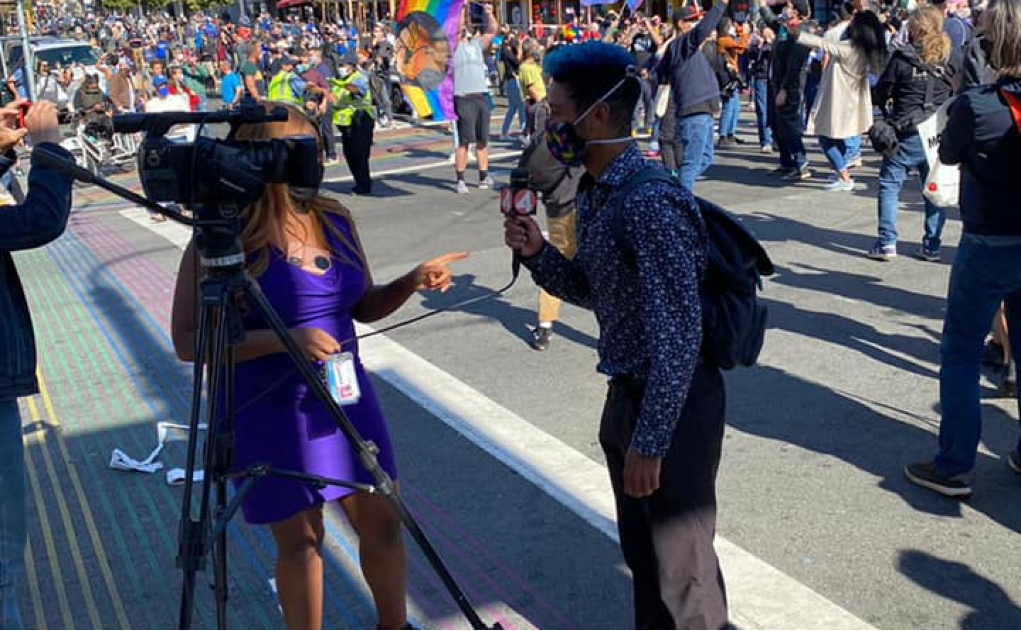Advertisement
Commentary
Understanding 'Minority Stress' Saved My Life

I lay in my bed, trapped. Tears cascaded slowly from the corners of my eyes as the self-loathing sought to consume me. Suicidal thoughts chased themselves around my mind. By my second year of medical school, my depression had shattered my sense of self. Because of the bullying I experienced as an African-American, gay medical student, I planned to end my life.
Thousands of instances of discrimination play over and over in my head: a dean who dismissed my concerns about untoward bias I was experiencing; a classmate saying “that’s so gay” as a pejorative statement; other classmates ignoring me in the hallways or at parties only to ask for my help, as their class president, in private because I had “talked too much about being Black and gay.”
A few weeks after that tortured day, I took my first-ever antidepressant. My shame at needing the pill to survive made it feel like Snow White’s apple lodged in my throat as I tried to swallow. I took my antidepressant every day, but my depressive symptoms never fully remitted. Even though I clinically entered a “remission” period, my symptoms flared whenever I encountered racism or homophobia, and I would experience a brief episode of suicidal thoughts, diminished interest in living or overwhelming guilt.
Fast-forward five years. My mind and heart haven’t felt this way — this free, this healed — in seven years. I’m a child and adolescent psychiatry fellow now. The enormous rainbow flag that signals the Castro, where I live, flows with the breeze. I still take my antidepressant. While those pills helped, they aren’t the only reason I haven’t had a suicidal thought since I arrived one month ago. Over my seven years of medical training, I learned thousands of facts to help patients, but we barely discussed the one thing that cured me: understanding minority stress.
Over my seven years of medical training, I learned thousands of facts to help patients, but we barely discussed the one thing that cured me: understanding minority stress.
The phrase “minority stress” gained traction in 2003 when psychiatric epidemiologist Dr. Ilan Meyer published a seminal paper on the subject. Meyer defined the term as “stigma, prejudice, and discrimination that create a hostile and stressful social environment that causes mental health problems.”
As I would soon learn, America’s bigotry toward minoritized people is not only literally making us sick; it’s killing us.
Just as importantly, he put forth a conceptual framework called minority stress theory. The theory posits that individuals from oppressed social groups experience excess stress and negative life events because of their non-dominant status. This can lead to or exacerbate mental health problems; the effects are unique, socioculturally based and long-lasting.
The mental health effects of being minoritized build up over time. Imagine getting a papercut. One is annoying. It stings. But it heals. Now, imagine receiving a thousand of those papercuts every day. Soon enough, you’re bleeding everywhere and unsure of how to staunch the wounds.
Advertisement
Minorities suffer from dramatic mental health disparities. The prevalence of suicide attempts among gay male youths versus straight counterparts is almost double. In Black children 5 to 12 years of age, the suicide rate is twice as high as their white counterparts. Holding more than one minority status — such as being Asian American and transgender — can compound the effects of minority stress. Since the 2016 election, this stress has only worsened. And that was even before coronavirus and the murder of George Floyd.

As psychiatrists, we stabilize acutely ill patients with medications and therapy. When antidepressants are used in conjunction with therapeutic modalities, such as cognitive behavioral therapy, the synergistic effect is often more beneficial than either intervention alone.
We need to add one more layer to discussions with minoritized patients: minority stress.
I first heard about minority stress in my second year of residency training. I researched the subject because I was looking for something that described what was happening to me, what I saw with too many patients. The diagnostic criteria of depression fit me, yet there was something “off” with my depression.
Whenever I felt safe, my depression vanished instantaneously. Whenever I left medical school to visit my friends from college in Boston, my suicidality evaporated then returned the second I came back. The same prompt remission happened whenever I visited my family in Seattle during residency.
Not until I read about stress and depression specific to minoritized people did I finally feel seen.
Classically depressive symptoms don’t vanish in a heartbeat. So I dug into other diagnoses but none of them fit. Not until I read about stress and depression specific to minoritized people did I finally feel seen.
And I wondered: If it took me years to hear about minority stress as a psychiatrist, how many others had never heard of this term? Are we thinking about mental health diagnoses and treatments for the minoritized properly? Are we ensuring discussions around possible minority stress are part of a patient’s treatment plan?
Or are we once again forcing all patients into a white-dominated mold with little to no nuance?
More importantly, what can we do to help?
I long for an answer that could cure everyone of minority stress. But this is an issue that will take a many-pronged approach. This is a problem that will take an unprecedented level of unity desperately needed in these times.
As we advocate for necessary systemic changes, we can have the essential conversations with our patients who are minoritized. While we make medication changes to do what we can to stabilize them, we can speak with them about the definitions necessary to describe and understand their experience. We work with them to think about ways in which their environment could be better while speaking about how the onus for such changes should not fall upon their already-burdened shoulders. We collaborate with them around what it means for them to embrace all facets of their identity in environments where it may feel — and be — unsafe to express oneself fully. We, as physicians, become vocal advocates while educating ourselves so patients don’t need to educate us.
In essence, we teach ourselves and our patients a new language. We heighten the language we already have to be more nuanced and encapsulating of the experiences of all.
We use our words to truly heal.
